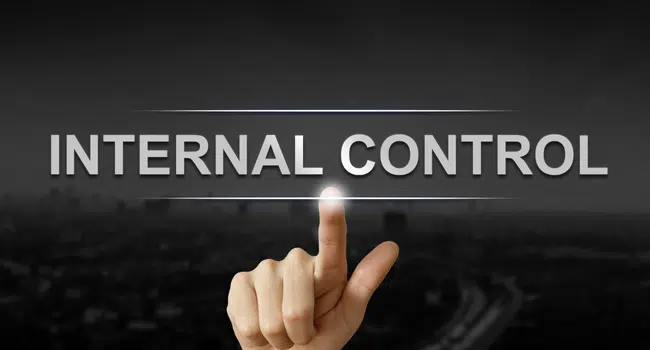Internal controls are the procedures and processes put in place by management to reduce risks and ensure that an organization runs smoothly. Organizations would be far more susceptible to errors, fraud, and theft without adequate internal controls. That’s why it’s so essential for businesses to monitor their internal controls regularly.
What Are Internal Controls?
Internal controls are the procedures and processes put in place by management to reduce risks and ensure that an organization runs smoothly. Organizations would be far more susceptible to errors, fraud, and theft without adequate internal controls. That’s why it’s so essential for businesses to monitor their internal controls regularly.
Types of internal controls:
- Preventative controls: These are controls that are put in place to prevent errors or fraud from occurring in the first place.
- Detective controls: These are controls put in place to detect errors or fraud that have already occurred.
- Corrective controls: These are controls put in place to correct errors or fraud that have already occurred.
Why Monitor Internal Controls?
There are many reasons why businesses need to monitor their internal controls regularly. First and foremost, monitoring internal controls can help prevent errors and fraud from occurring in the first place. Additionally, regular monitoring can help ensure corrective measures are taken quickly if mistakes or fraud occur. Finally, regular monitoring of internal controls can help businesses maintain compliance with laws and regulations.
What Is Access Control Monitoring?
Access control monitoring is tracking and logging all activity on systems and networks to detect and prevent unauthorized access. By monitoring user activity, businesses can identify potential security threats and stop them before they cause any damage.
Tips For Monitoring Internal Controls
Here are five tips to help you do just that:
Establish Clear Roles and Responsibilities
One of the most important things you can do when monitoring internal controls is to establish clear roles and responsibilities. Employees should know exactly what their job entails and what is expected of them. This will not only help employees stay on task and avoid making mistakes, but it will also make it easier to identify any potential problems or areas of improvement.
Keep An Eye On Those Who Have Access To Sensitive Information
There should always be a limited number of people with access to sensitive information, such as financial data or customer records. If possible, assign someone to monitor who has access to this information and keep track of any changes that are made. This will help prevent unauthorized access and minimize the risk of data leaks or breaches with access control monitoring.
Conduct Regular Audits
Regular audits are a crucial part of monitoring internal controls. Your staff or an independent third party can conduct these audits internally. Either way, they should be performed regularly to identify any weak points in your internal controls so they can be addressed promptly.
Review Policies and Procedures Regularly
Policies and procedures should be reviewed regularly to ensure they are still practical and relevant. Outdated policies and procedures can create gaps in your internal controls, so it’s essential to keep them up to date. Additionally, new policies or procedures may need to be implemented from time to time to address changing needs or risks within your organization.
Communicate With Employees Regularly
Communicating with employees regularly is another crucial part of effective internal control monitoring. Employees should be kept up-to-date on changes to policies or procedures and new risks that may affect the organization. Additionally, employees should feel free to voice any concerns about internal controls or suggest ideas for improvement. Creating an open dialogue will help ensure your internal control system is as strong as possible.
Final Thoughts
Monitoring internal controls is essential for any organization wishing to reduce risks and run smoothly. By following these five tips, you can ensure that your internal controls are up-to-date and effective in minimizing risks within your organization.
Read more on KulFiy
